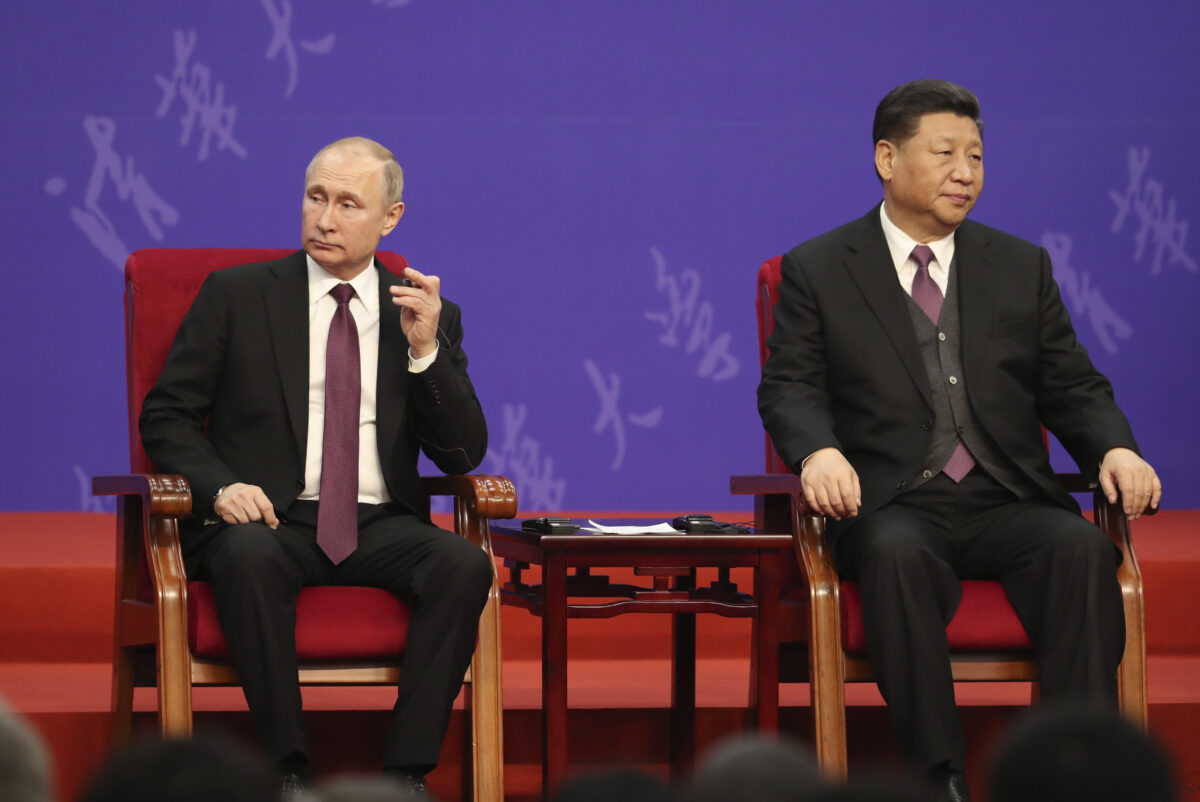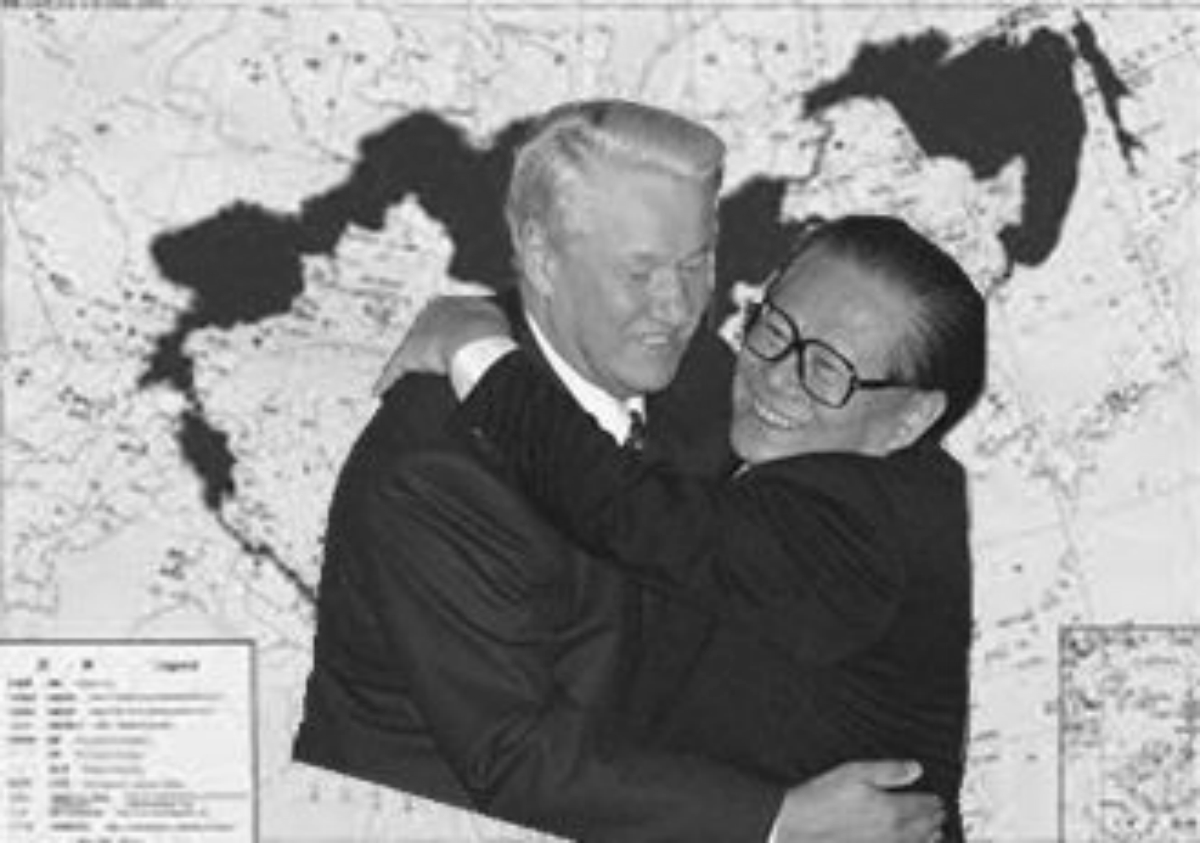


China recently published a new version of its world map with politically-sensitive changes that affect Russia. The ironic move came just before Beijing released a plan seeking to promote peace talks between Ukraine and Russia.
The Chinese Ministry of Natural Resources on Feb. 14 published a new official world map that returned to using the old Chinese names of eight cities and areas annexed by Russia in the late 19th and early 20th centuries.
However, 10 days later, on Feb. 24, Beijing released a 12-point document reiterating calls for a political settlement to the Russia-Ukraine conflict. China widely referred to the document as a “peace plan.”
Although the document outlined China’s desire to mediate the conflict, it offered no solutions to the war and argued that the United Nations should drop all sanctions against Russia.
However, as Beijing seeks closer economic ties with Moscow amid the ongoing Russia-Ukraine conflict, it issued directives to call the Russian-occupied regions by their original Chinese names.
For example, Russian-occupied Vladivostok would now be called Haishenwai in Chinese, Sakhalin Island would be Kuyedao, and the Stanovoy Range would again be called the Outer Xing’an Range.
The Russian names of the eight locations would now be displayed in brackets under Beijing’s new directives.
Meanwhile, articles by Chinese columnists on how much of the country’s land was taken by foreign powers in the past would often circulate in China.
In 1689, the Qing Dynasty (1636–1912) and Russia signed the Nerchinsk Treaty, which stipulated that Vladivostok belonged to the Qing Dynasty. However, when the Qing government signed three treaties to end the Second Opium War in 1860, the Sino-Russian Beijing Treaty signed in November of that year formally ceded about 154,440 square miles of the territory east of the Ussuri River, including Vladivostok.
Vladivostok was originally under the jurisdiction of Jilin in the Qing Dynasty before 1860, and its original name was Haishenwei, which means “a small fishing village by the sea” in the Manchu language.
In June 1860, the Russian army occupied the area and renamed it Vladivostok, meaning “Conquering the East” or “Ruling the East.” Its Russian name suggests that land was robbed from China to show off Russian military power, and to humiliate China.
After World War II, the Republic of China (ROC, currently Taiwan’s government) signed an agreement with the Soviet Union stating that Vladivostok would be returned to China in 50 years. However, after the ROC army retreated to Taiwan and the CCP seized power in mainland China, the Soviet Union unilaterally denied the treaty, and the recovery of Vladivostok was suspended.
Former Chinese dictator Jiang Zemin gave away swaths of land 47 times the size of Taiwan to Russia and other neighboring countries, which was widely referred to it as “traitorous treaties.”
During the Qing Dynasty, Russia occupied large swaths of Chinese territory due to China losing the Opium Wars. Qing China was forced to sign a series of treaties—collectively known as the “Unequal Treaties”–that gave away territories and ports to various Western powers as well as to Russia and Japan.
However, instead of recovering a massive portion of the annexed lands, then CCP leader Jiang Zemin signed them away to Russia, with no conditions attached.
From 1991 to 2001, Jiang signed three treaties with Russia: Mikhail Gorbachev in 1991, Boris Yeltsin in 1999, and Vladimir Putin in 2001, acknowledging all the unequal treaties between China and Russia signed during the Qing Dynasty, and handing over more than 54 million square miles of disputed border territory to Russia.
On Dec. 9, 1999, Jiang Zemin and then Russian President Boris Yeltsin signed a Sino-Russia border agreement, which fully acknowledged a series of unequal treaties between Russia and the Qing government, and unconditionally gave away more than 1 million square kilometers of land in northeast China to Russia. As a result, the Tumen River estuary was allocated to Russia, and China no longer had an estuary to the Sea of Japan. In addition, Tuvan Uriankhai, which was occupied by the Soviet Union in 1944 without a treaty, was also given to Russia.
In July 2001, Jiang and Yeltsin decided to split the Heixiazi Island—all of which belonged to China—and gave half of it to Russia.
Jiang also signed a number of border agreements with other countries to unconditionally give away more than 500,000 square kilometers of land in northwest China to several Central Asian countries, including Tajikistan. Part of the Laoshan Mountain, Zheyin Mountain in Yunnan Province, and Faka Mountain in Guangxi Province, as well as Bach Long Vi Island, the largest island among all South China Sea islands, were also unconditionally given to Vietnam by Jiang.
Altogether, Jiang Zemin surrendered 1.7 million square kilometers of land to other countries, equivalent to 47 Taiwan islands in size.

